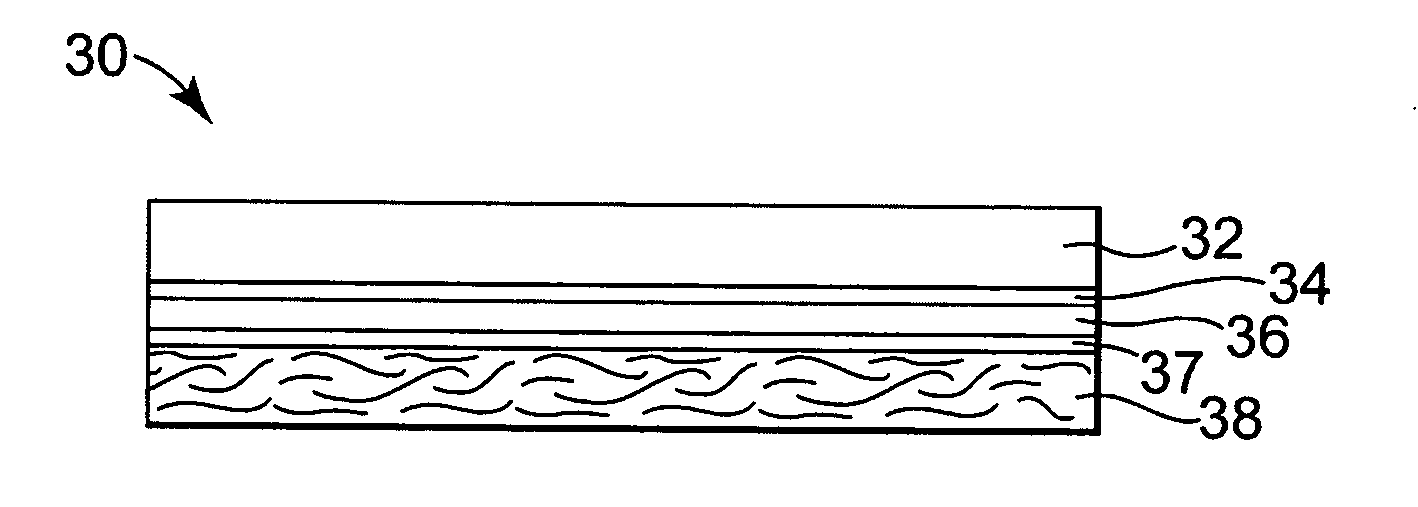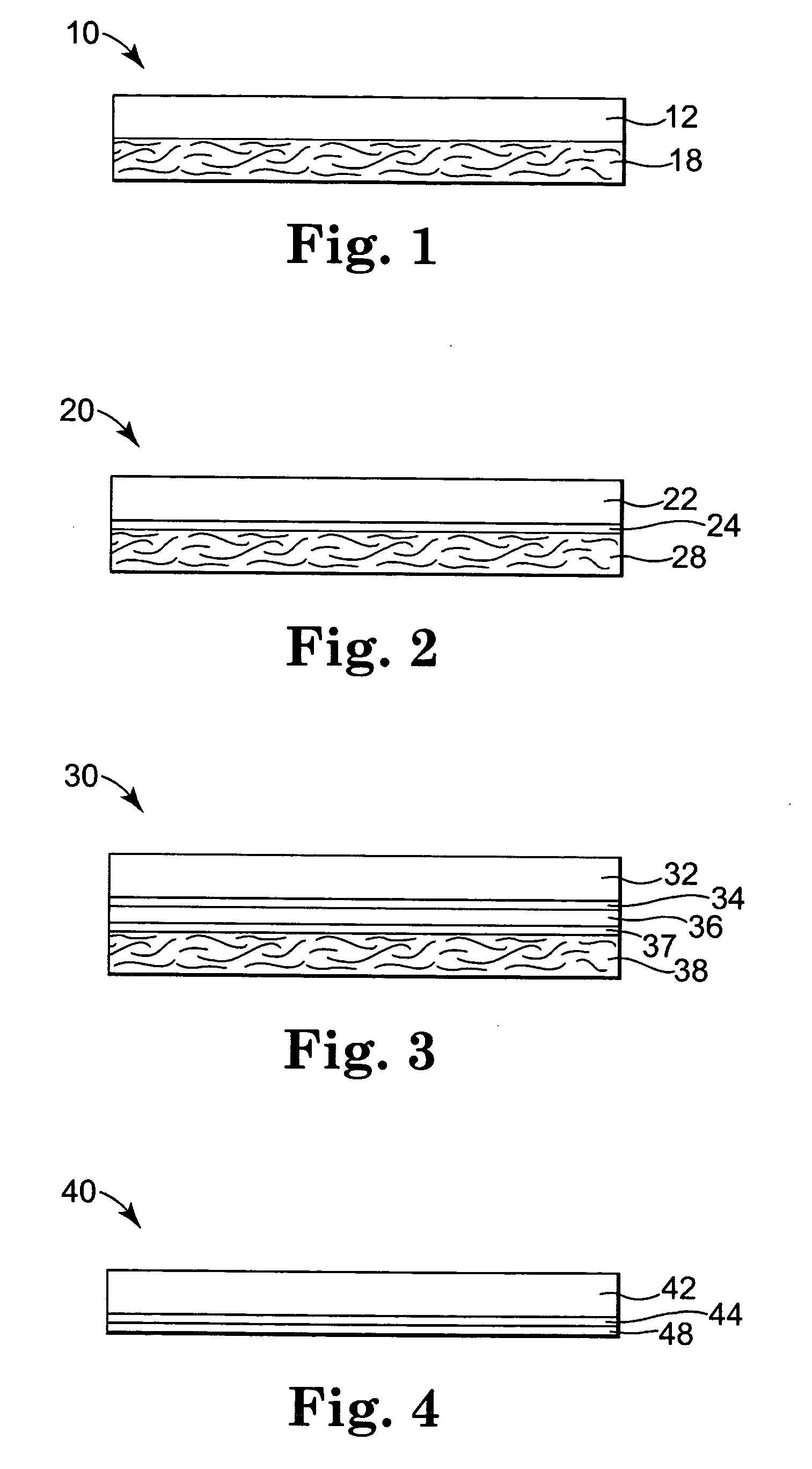Moisture transmissive laminate
a laminate and moisture-transmitting technology, applied in the field of laminates, can solve the problems of poor construction, less desirable under other circumstances, significant moisture condensation, including in or behind walls, etc., and achieve the effect of facilitating the removal of the laminate, high permeability, and exceptional strength characteristics and aesthetics
- Summary
- Abstract
- Description
- Claims
- Application Information
AI Technical Summary
Benefits of technology
Problems solved by technology
Method used
Image
Examples
Embodiment Construction
[0021]“Monolithic,”“non-porous” and “continuous,” as used herein, each generally refers to the lack of small holes, openings or gaps that provide a direct pathway for liquid moisture to flow, as contrasted with molecular level pathways that can be present for diffusion of moisture. A wallcovering is considered to be continuous if it has a Hydrostatic Head of at least about 20 cm. (Hydrostatic Head can be measured using a Souter hydrostatic test apparatus in accordance with AATCC 127 test protocol.)
[0022] The laminate preferably has an Elmendorf tear strength, as determined by CCC-T-191b 5132 test method, of at least about 45 N×45 N (10 lbs×10 lbs), preferably at least about 65 N×65 N (15 lbs×15 lbs) and a Tensile breaking strength, as determined by CCC-T-191b 5100 test method, of at least about 90 N×90 N (20 lbs×20 lbs), preferably at least about 110 N×110 N (25 lbs×25 lbs).
[0023] The wallcovering laminate also can provide an outermost surface that is highly cleanable as compared ...
PUM
| Property | Measurement | Unit |
|---|---|---|
| Length | aaaaa | aaaaa |
| Fraction | aaaaa | aaaaa |
| Thickness | aaaaa | aaaaa |
Abstract
Description
Claims
Application Information
 Login to View More
Login to View More - R&D
- Intellectual Property
- Life Sciences
- Materials
- Tech Scout
- Unparalleled Data Quality
- Higher Quality Content
- 60% Fewer Hallucinations
Browse by: Latest US Patents, China's latest patents, Technical Efficacy Thesaurus, Application Domain, Technology Topic, Popular Technical Reports.
© 2025 PatSnap. All rights reserved.Legal|Privacy policy|Modern Slavery Act Transparency Statement|Sitemap|About US| Contact US: help@patsnap.com


